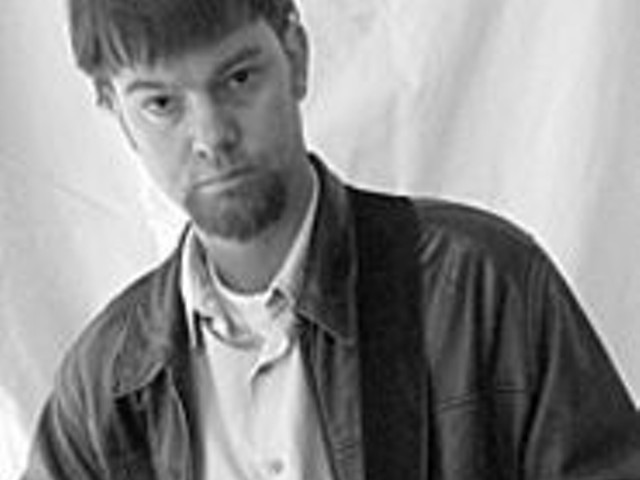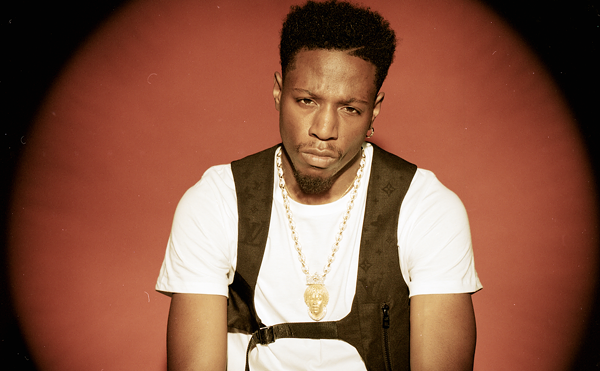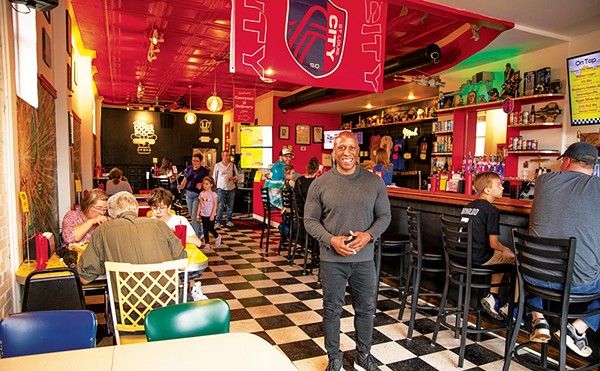Tenor saxophonist Lovano, who performs at 3:30 p.m. Saturday, served an old-school apprenticeship before rising to jazz stardom in the '90s. He played gritty soul-jazz with organists Jack McDuff and Lonnie Smith, performed in the Woody Herman and Mel Lewis big bands, and gigged and recorded alongside John Scofield, Elvin Jones, Carla Bley, Lee Konitz, Charlie Haden, Bob Brookmeyer, Paul Motian and many others before launching his career as a leader. Since then, he's won accolades as a versatile, forward-thinking player and composer, recording a remarkable range of material ranging from hard-swinging small-group blowing sessions, chamber music and orchestral settings of his own compositions, and lovingly crafted tributes to Frank Sinatra and Enrico Caruso.
Sandoval, who will appear at 7:30 p.m. Saturday, first came to this country in the late '70s as the trumpet player for the Cuban jazz-fusion group Irakere. A protégé of Dizzy Gillespie, Sandoval is a crafty Cubano bebopper as well as a nonpareil lead player whose high-note skills have invited comparisons to steel-lipped trumpet greats such as Cat Anderson and Maynard Ferguson.
Lovano and Sandoval are both first-rate musicians, but for many jazz aficionados the most anticipated performance at this year's festival is the set at 7:30 p.m. Friday by the Dave Holland Big Band. Holland has developed a reputation as a premier jazz bassist and composer over the past 35 years, beginning with his work with Miles Davis on groundbreaking sessions including In A Silent Way and Bitches Brew. His critically acclaimed Big Band represents an intriguing new direction for his music, and given the challenges of taking a large ensemble on the road, St. Louis is fortunate to host one of the group's few U.S. dates this year.
Born in Wolverhampton, England, in 1946, Holland played ukelele, guitar and bass before picking up acoustic bass at age 15. Like many young musicians, he played a bit of everything, from dance band and rock gigs to New Orleans-style jazz and swing. Holland moved to London at 18, studying at the Guildhall School of Music & Drama and performing with John Surman, John McLaughlin, Kenny Wheeler, and other young British jazzmen. Then, a few months before Holland's twenty-second birthday, Miles Davis heard the young bassist playing at Ronnie Scott's jazz club in London. Davis asked Holland to join his band, and in the summer of 1968 Holland moved to New York.
After almost three years with Davis, Holland left to form the influential cooperative quartet Circle with pianist Chick Corea and saxophonist Anthony Braxton and to begin his solo recording career. One of his early records, 1972's Conference of the Birds, helped establish him as a bandleader, appearing on many critics' lists of essential modern jazz albums. It also marked the beginning of a relationship with the prestigious ECM label that has spanned a dozen albums and three decades.
Along the way, Holland has performed and recorded with such jazz luminaries as Hank Jones, Betty Carter, Stan Getz, Sam Rivers, Herbie Hancock, John McLaughlin, Pat Metheny, Gary Burton and Jim Hall. He still takes all sorts of gigs (such as a recent anniversary tribute to the famous Massey Hall bebop concert alongside Hancock, Roy Haynes, Roy Hargrove and Kenny Garrett), but for the last twenty years Holland has concentrated much of his energy on his own group and original compositions. Given the opportunity to recast some of those works for a big-band setting, Holland was more than willing.
"What started it off was a concert series at the Montreal festival in June of 2000," Holland explains. "I was one of the featured artists, and for that you do five concerts during the festival. I decided to do a big band concert as one of the five."
Since Holland's big band grew from musical ideas first explored with his smaller groups, it was logical for him to use his regular working quintet -- trombonist Robin Eubanks, vibraphonist Steve Nelson, saxophonist Chris Potter and drummer Billy Kilson -- as the core of an expanded ensemble. "That was an important aspect of this, because I wanted to build on what we had done as a small group while taking advantage of the compositional and orchestration possibilities of a larger ensemble," he says.
"Of course, the rhythm section is a very important part of it -- it creates a backdrop that gives the band a unique sound," Holland continues. "One of the concepts that we talked about is to try and play the music conceptually as we would in the small group, rather than having the sort of classic big band approach in the rhythm section."
Featuring new arrangements of Holland tunes such as "Shadow Dance" and "Blues for C.M.," the Montreal performance received rave reviews, and a brief tour and a well-received album titled What Goes Around followed. Since then, the band has done additional touring and has recorded an album featuring a suite commissioned by the Monterey Jazz Festival that will be released next year. "This is the first big band that I've written for," Holland notes. "I wanted to start at this point with the traditional three sections of trumpet, trombones and saxophones. I wanted to work with that and experiment with the possibilities. I like the sound that instrumentation makes, but I'm trying to do something more conceptual with it to make it sound different.
"The small group gives you a little less density and maybe a little more flexibility in some ways," he adds. "But I'm still thinking about featuring the improvising aspects of the music, even though there are more compositional materials."
To augment his quintet, Holland has recruited a capable group of additional musicians, including saxophonists Antonio Hart, Gary Smulyan and Mark Gross; trumpeters Taylor Haskins, Alex Sipiagin and Duane Eubanks; and trombonists Josh Roseman and Jon Arons. "We're trying to combine players of different age groups and experiences," he says. "One of the nice things about a big band is the chance for cross-generational contact. I really wanted a mixture of young players and players of more experience so we could have that kind of contact."
Holland cites diverse influences on his big-band writing, from the classic collaborative orchestrations of Duke Ellington and Billy Strayhorn to more recent work by Thad Jones, Kenny Wheeler, Gil Evans and Charles Mingus. Like Ellington and Strayhorn, Holland strives to cast specific players in roles that showcase their individual talents. "I wanted to find players who bring their own personalities to the band," he explains. "I like to create settings for the different styles that people play."
He's not afraid to shake things up a bit, either. "We try to add new works all the time to keep the juices flowing," Holland says. "I like to keep the program interesting for us as well as the audience. There is a certain amount of flexibility built into the compositions for that reason. Some of the compositions allow for a choice of who might play on it on a given night, and that gives people a chance to play on different material. I really want to feature everybody in the band on one piece each so that everybody gets a chance to get out and make a statement."





